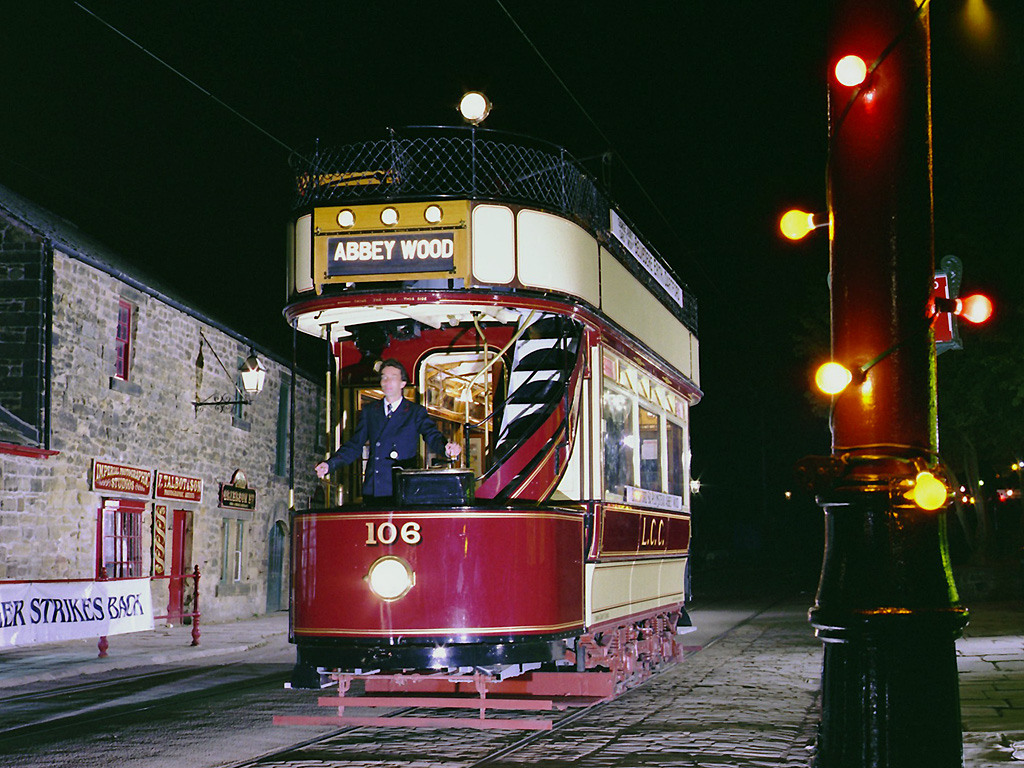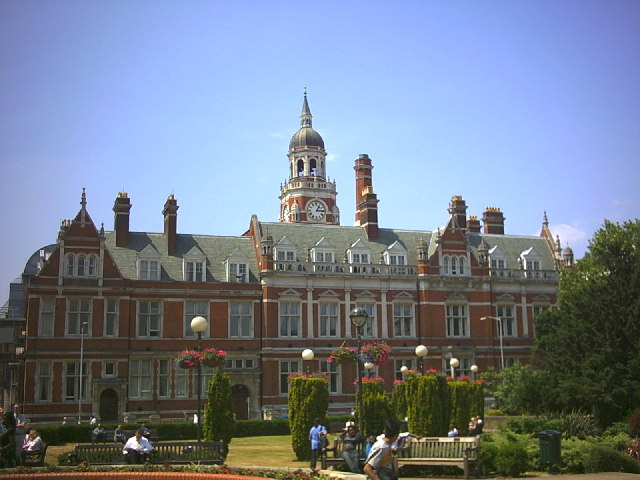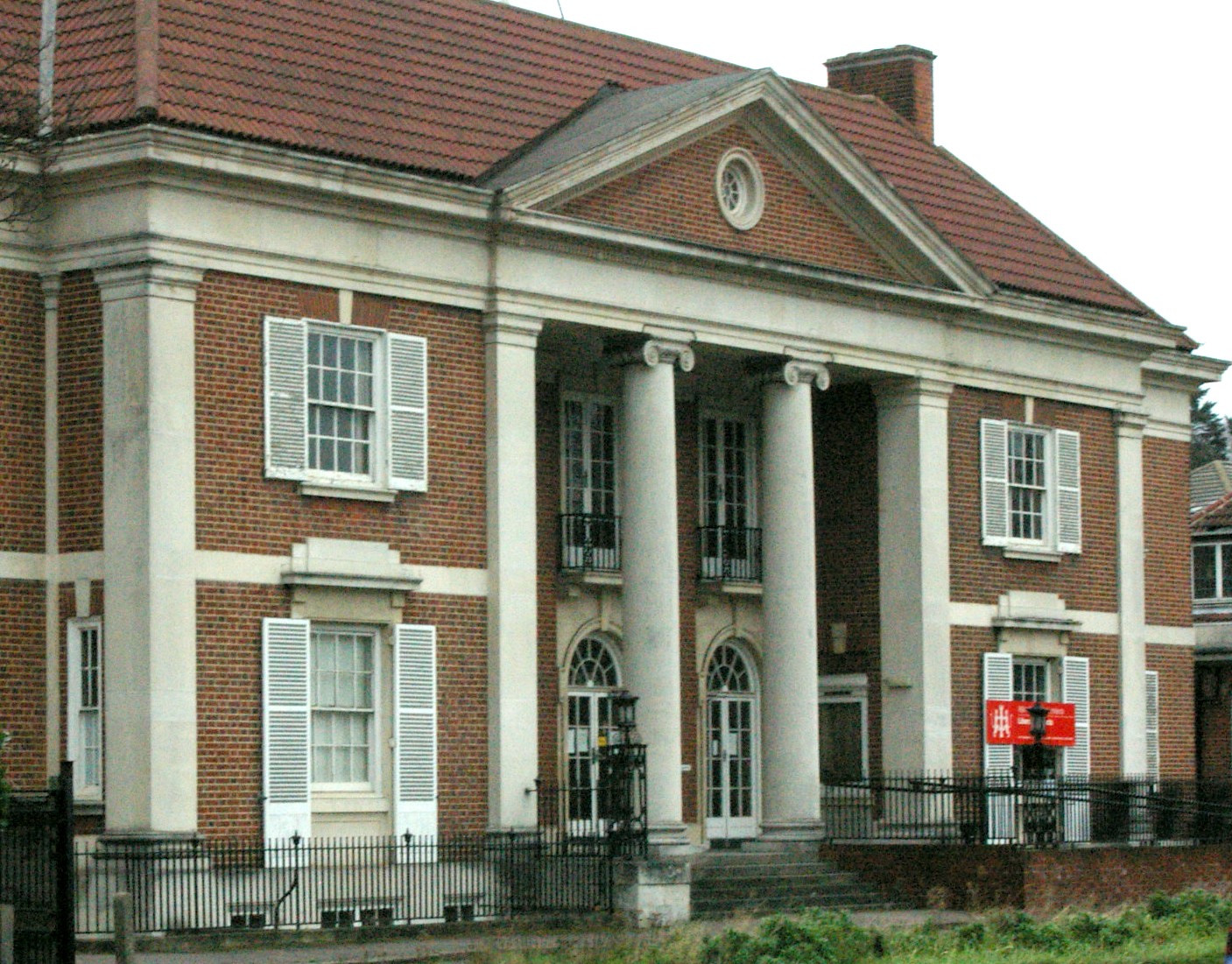|
London County Council Tramways
The London County Council Tramways was an extensive network of public street tramways operated by the council throughout the County of London, UK, from 1899 to 1933, when they were taken over by the London Passenger Transport Board. Acquisition of tramways Under the Tramways Act 1870 local authorities were permitted to acquire privately operated tramways in their area after they had been operating for twenty-one years. Accordingly, in October 1891 the LCC decided to exercise its option to take over four and a half miles of route operated by the London Street Tramways Company. The company disagreed with the price offered by the council, and the sale did not go through until 1 March 1895. As the LCC had no powers to operate tramways itself, it put the operation of the line out to tender, which the incumbent London Streetways won, being the only applicant. In 1896 the London Street Tramways offered its network for sale to the county council, as did the North Metropolitan Tramwa ... [...More Info...] [...Related Items...] OR: [Wikipedia] [Google] [Baidu] |
London County Council
London County Council (LCC) was the principal local government body for the County of London throughout its existence from 1889 to 1965, and the first London-wide general municipal authority to be directly elected. It covered the area today known as Inner London and was replaced by the Greater London Council. The LCC was the largest, most significant and most ambitious English municipal authority of its day. History By the 19th century, the City of London Corporation covered only a small fraction of metropolitan London. From 1855, the Metropolitan Board of Works (MBW) had certain powers across the metropolis, but it was appointed rather than elected. Many powers remained in the hands of traditional bodies such as parishes and the counties of Middlesex, Surrey and Kent. The creation of the LCC in 1889, as part of the Local Government Act 1888, was forced by a succession of scandals involving the MBW, and was also prompted by a general desire to create a competent government fo ... [...More Info...] [...Related Items...] OR: [Wikipedia] [Google] [Baidu] |
River Thames
The River Thames ( ), known alternatively in parts as the The Isis, River Isis, is a river that flows through southern England including London. At , it is the longest river entirely in England and the Longest rivers of the United Kingdom, second-longest in the United Kingdom, after the River Severn. The river rises at Thames Head in Gloucestershire, and flows into the North Sea near Tilbury, Essex and Gravesend, Kent, via the Thames Estuary. From the west it flows through Oxford (where it is sometimes called the Isis), Reading, Berkshire, Reading, Henley-on-Thames and Windsor, Berkshire, Windsor. The Thames also drains the whole of Greater London. In August 2022, the source of the river moved five miles to beyond Somerford Keynes due to the heatwave in July 2022. The lower reaches of the river are called the Tideway, derived from its long tidal reach up to Teddington Lock. Its tidal section includes most of its London stretch and has a rise and fall of . From Oxford to th ... [...More Info...] [...Related Items...] OR: [Wikipedia] [Google] [Baidu] |
Charlton, London
Charlton is an area of southeast London, England, in the Royal Borough of Greenwich. It is east of Greenwich and west of Woolwich, on the south bank of the River Thames, southeast of Charing Cross. An ancient parish in the county of Kent, it became part of the metropolitan area of London in 1855 and is home to Charlton Athletic F.C. and Charlton House. History Toponymy Charlton is recorded in the 1086 Domesday Book as ''Cerletone''. It is formed from Old English ' ceorl' and 'tūn' and means 'farmstead of the freemen or peasants'. It is a common English placename and the parish was also known as Charlton next Woolwich to distinguish it from Charlton by Dover. During the 19th century the riverside portion of the area became known as New Charlton. Middle Ages Charlton is assessed in the Domesday Book of 1086 at one "sulung", which is commonly held to have been the equivalent of two hides. In 1086 it was in the fee of Gundulf, bishop of Rochester, but in 1066 it had been he ... [...More Info...] [...Related Items...] OR: [Wikipedia] [Google] [Baidu] |
Greenwich Power Station
Greenwich Power Station is a standby gas and formerly oil and coal-fired power station by the River Thames at Greenwich in south-east London. Originally constructed to supply power for London's tram system, since 1988 it has been London Underground's central emergency power supply, providing power if there is partial or total loss of National Grid supplies. History The power station was constructed on the riverside site of a former tram depot operated by the London Tramways Company (and before that by the Pimlico Peckham & Greenwich Street Tramway Company, taken over in 1873). An Act of Parliament, The London County Council (Tramways and Improvement) Act 1902, empowered London County Council to construct new tramways, improve existing ones and to "erect maintain and use a station for generating and transforming electrical energy with all necessary engines dynamos plant and machinery." The station was designed by William Edward Riley, chief architect of the LCC architects depa ... [...More Info...] [...Related Items...] OR: [Wikipedia] [Google] [Baidu] |
London United Tramways
London United Tramways Company Limited was an operator of trams and trolleybuses in the western and southern suburbs of London, UK, from 1894 to 1933, when it passed to the London Passenger Transport Board. Origins The company was formed in 1894 by the Imperial Tramways Company under the leadership of George White and Clifton Robinson to take over the assets of the West Metropolitan Tramways Company, which had gone into receivership and had operated a horse-drawn tram service from Shepherd's Bush to Acton and Chiswick, and from Hammersmith to the north side of Kew Bridge via Chiswick. A short route ran from the south side of Kew Bridge to Richmond. Electrification LUT relaid the existing track, which was in a poor state of repair, and extended and electrified the system. Electric trams first ran on three routes on 4 April 1901 between Hammersmith and Kew Bridge, between Shepherd's Bush and Kew Bridge (via Chiswick), and between Shepherd's Bush and Acton, London's first el ... [...More Info...] [...Related Items...] OR: [Wikipedia] [Google] [Baidu] |
Hampton Court
Hampton Court Palace is a Grade I listed royal palace in the London Borough of Richmond upon Thames, southwest and upstream of central London on the River Thames. The building of the palace began in 1514 for Cardinal Thomas Wolsey, the chief minister of Henry VIII. In 1529, as Wolsey fell from favour, the cardinal gave the palace to the king to check his disgrace. The palace went on to become one of Henry's most favoured residences; soon after acquiring the property, he arranged for it to be enlarged so that it might more easily accommodate his sizeable retinue of courtiers. Along with St James' Palace, it is one of only two surviving palaces out of the many the king owned. The palace is currently in the possession of King Charles III and the Crown. In the following century, King William III's massive rebuilding and expansion work, which was intended to rival the Palace of Versailles, destroyed much of the Tudor palace.Dynes, p. 90. His work ceased in 1694, leaving the pala ... [...More Info...] [...Related Items...] OR: [Wikipedia] [Google] [Baidu] |
Metropolitan Electric Tramways
Metropolitan Electric Tramways Limited (MET) operated electric tram services in suburban areas of Middlesex and Hertfordshire from 1904 to 1933, when its services passed to the London Passenger Transport Board. History The company originated in 1894 as the Metropolitan Tramways and Omnibus Company Limited. The company hoped to construct horse tramways in the northern suburbs of London. The proposed tramways were not built, but an agreement was entered into with Middlesex County Council to operate the tramway network it was constructing under the Light Railways Act 1896. The company was acquired by British Electric Traction (BET) in 1901, and its name changed to Metropolitan Electric Tramways Ltd. (MET). The first section of line was opened on 22 July 1904, with services from Finsbury Park to Manor House (where a connection with the London County Council Tramways was made) and Wood Green. On 3 December a separate section from Cricklewood to Edgware via Hendon opened. The netwo ... [...More Info...] [...Related Items...] OR: [Wikipedia] [Google] [Baidu] |
Enfield Town
Enfield is a large town in north London, England, north of Charing Cross. It had a population of 156,858 in 2018. It includes the areas of Botany Bay, Brimsdown, Bulls Cross, Bullsmoor, Bush Hill Park, Clay Hill, Crews Hill, Enfield Highway, Enfield Lock, Enfield Town, Enfield Wash, Forty Hill, Freezywater, Gordon Hill, Grange Park, Hadley Wood, Ponders End, and World's End. South of the Hertfordshire border and M25 motorway, it borders Waltham Cross to the north, Winchmore Hill and Edmonton to the south, Chingford and Waltham Abbey, across the River Lea, to the east and north-east, with Cockfosters, Monken Hadley and Oakwood to the west. Historically an ancient parish in the Edmonton Hundred of Middlesex, it was granted urban district status in 1894 and municipal borough status in 1955. In 1965, it merged with the municipal boroughs of Southgate and Edmonton to create the London Borough of Enfield, a local government district of Greater London, of which Enfield ... [...More Info...] [...Related Items...] OR: [Wikipedia] [Google] [Baidu] |
Chipping Barnet
Chipping Barnet or High Barnet is a suburban market town in north London, forming part of the London Borough of Barnet, England. It is a suburban development built around a 12th-century settlement, and is located north-northwest of Charing Cross, east from Borehamwood, west from Enfield and south from Potters Bar. Its population, including its localities East Barnet, New Barnet, Hadley Wood, Monken Hadley, Cockfosters and Arkley, was 47,359 in 2011. Its name is very often abbreviated to just Barnet, which is also the name of the borough of which it forms a part; the town has been part of Greater London since 1965 after the abolition of Barnet Urban District then in Hertfordshire. Chipping Barnet is also the name of the Parliamentary constituency covering the local area – the word "Chipping" denotes the presence of a market, one that was established here at the end of the 12th century and persists to this day. Chipping Barnet is one of the highest urban settlements in Lond ... [...More Info...] [...Related Items...] OR: [Wikipedia] [Google] [Baidu] |
County Borough Of Croydon
The County Borough of Croydon was a local government district in and around the town of Croydon in north east Surrey, England from 1889 to 1965. Since 1965 the district has been part of the London Borough of Croydon within Greater London. History A local board of health was formed for the parish of ''Croydon St John the Baptist'' in 1849. On 9 March 1883 the town received a charter of incorporation to become a municipal borough. The borough was granted a commission of the peace and a separate court of quarter sessions in 1885 and 1889 respectively.''Kelly's Directory of Kent, Surrey and Sussex'' (1891), pp. 1199–1204 Under the Local Government Act 1888 it became an autonomous county borough in 1889. The area of the original borough included part of Norwood and Addiscombe, Bensham, Croham, Coombe, Haling, Norbury, Shirley, Waddon and Woodside. From 1894 to 1915 it was adjacent to Croydon Rural District to the south, east and west and the County of London to the north. The ... [...More Info...] [...Related Items...] OR: [Wikipedia] [Google] [Baidu] |
Purley, London
Purley is an area of the London Borough of Croydon in London, England, south of Charing Cross, with a history going back at least 800 years. It was originally granted as an estate from holdings at Sanderstead and until as a district of Surrey and then, with neighbouring Coulsdon, as an urban district that became an electoral ward of the London Borough of Croydon, becoming part of the ceremonial county of London, in 1965. In 2018 the Purley ward was divided into two: Purley and Woodcote, and Purley Oaks and Riddlesdown. Purley is a suburban area of South London, and the quintessential suburban environment has been referenced in fictional and popular culture, most notably as the setting for the long running Terry and June sitcom. Purley had a population of about 14,000 in 2011. History Toponymy The name derives from an estate, mentioned in about 1200 when it was deeded to one William de Pirelea, son of Osbert de Pirelea by the abbot of St. Peter’s monastery near Winchester. ... [...More Info...] [...Related Items...] OR: [Wikipedia] [Google] [Baidu] |
City Of London
The City of London is a city, ceremonial county and local government district that contains the historic centre and constitutes, alongside Canary Wharf, the primary central business district (CBD) of London. It constituted most of London from its settlement by the Romans in the 1st century AD to the Middle Ages, but the modern area named London has since grown far beyond the City of London boundary. The City is now only a small part of the metropolis of Greater London, though it remains a notable part of central London. Administratively, the City of London is not one of the London boroughs, a status reserved for the other 32 districts (including Greater London's only other city, the City of Westminster). It is also a separate ceremonial county, being an enclave surrounded by Greater London, and is the smallest ceremonial county in the United Kingdom. The City of London is widely referred to simply as the City (differentiated from the phrase "the city of London" by ca ... [...More Info...] [...Related Items...] OR: [Wikipedia] [Google] [Baidu] |



.jpg)






